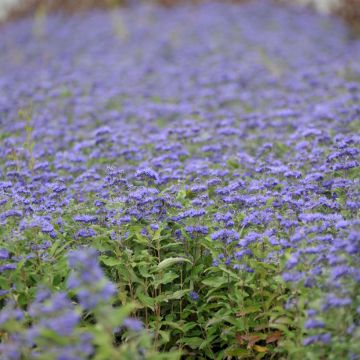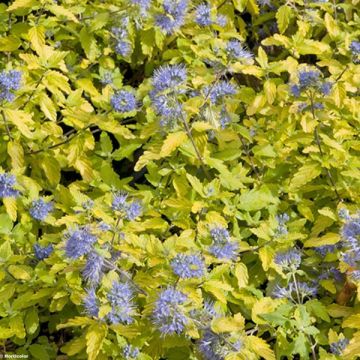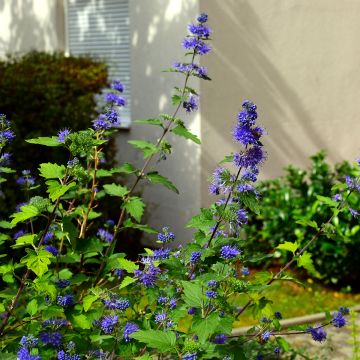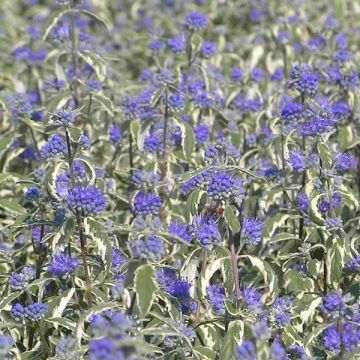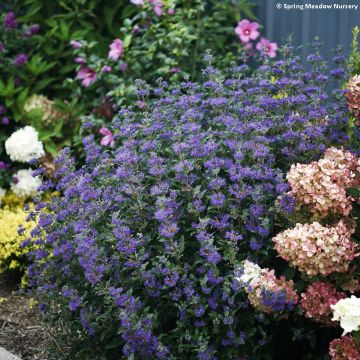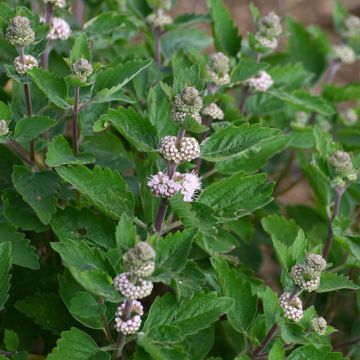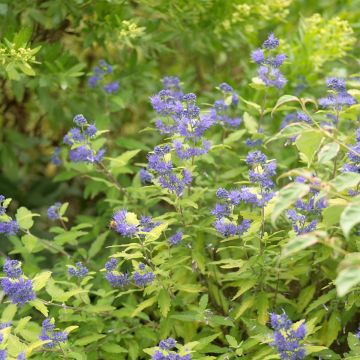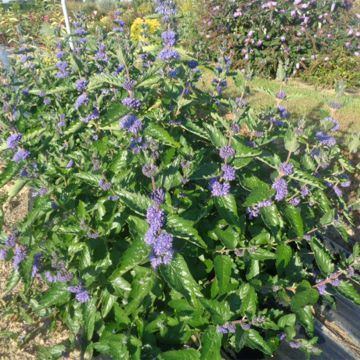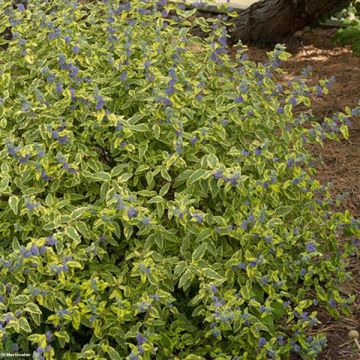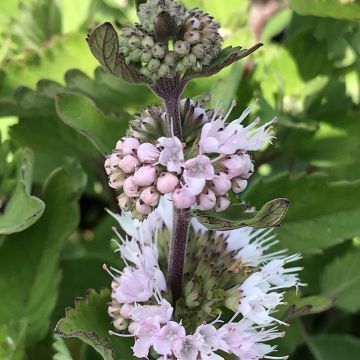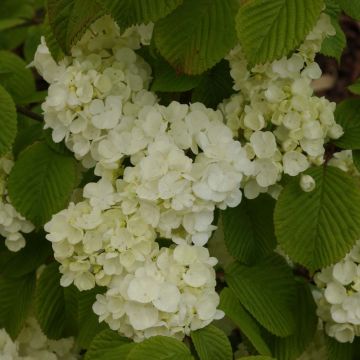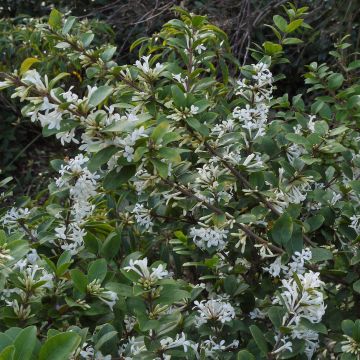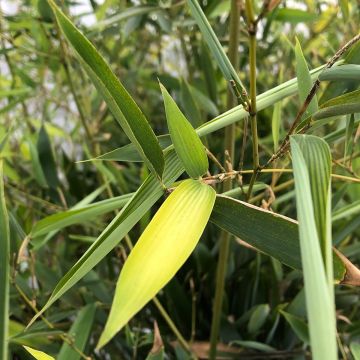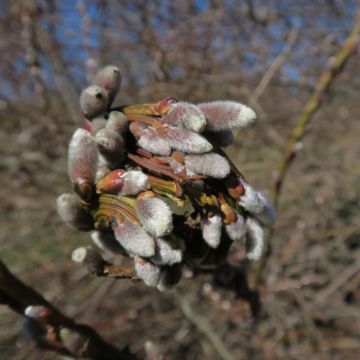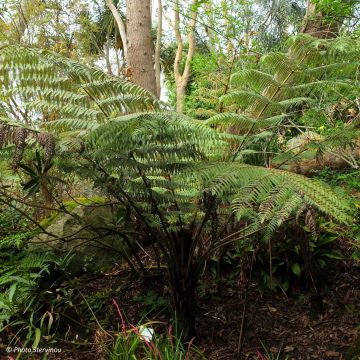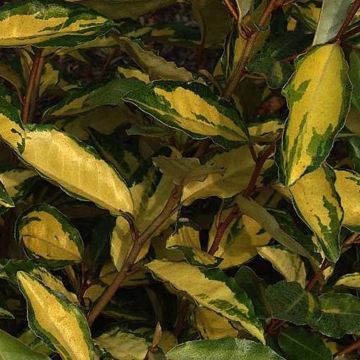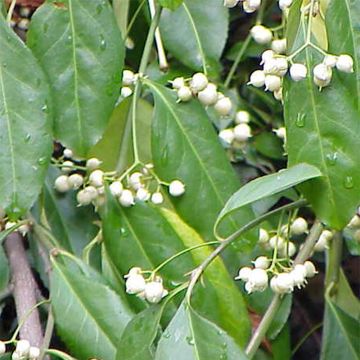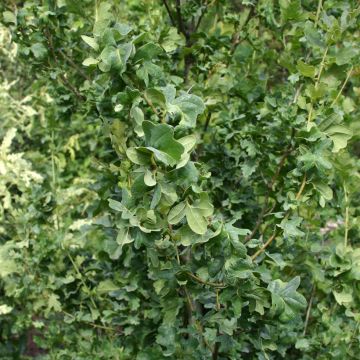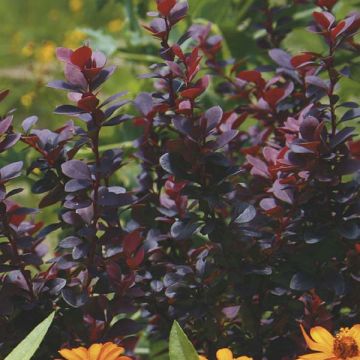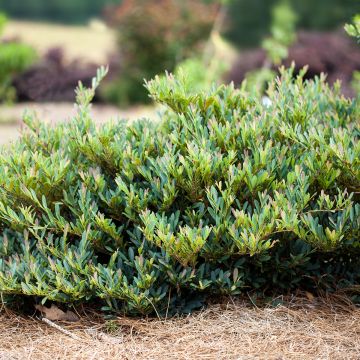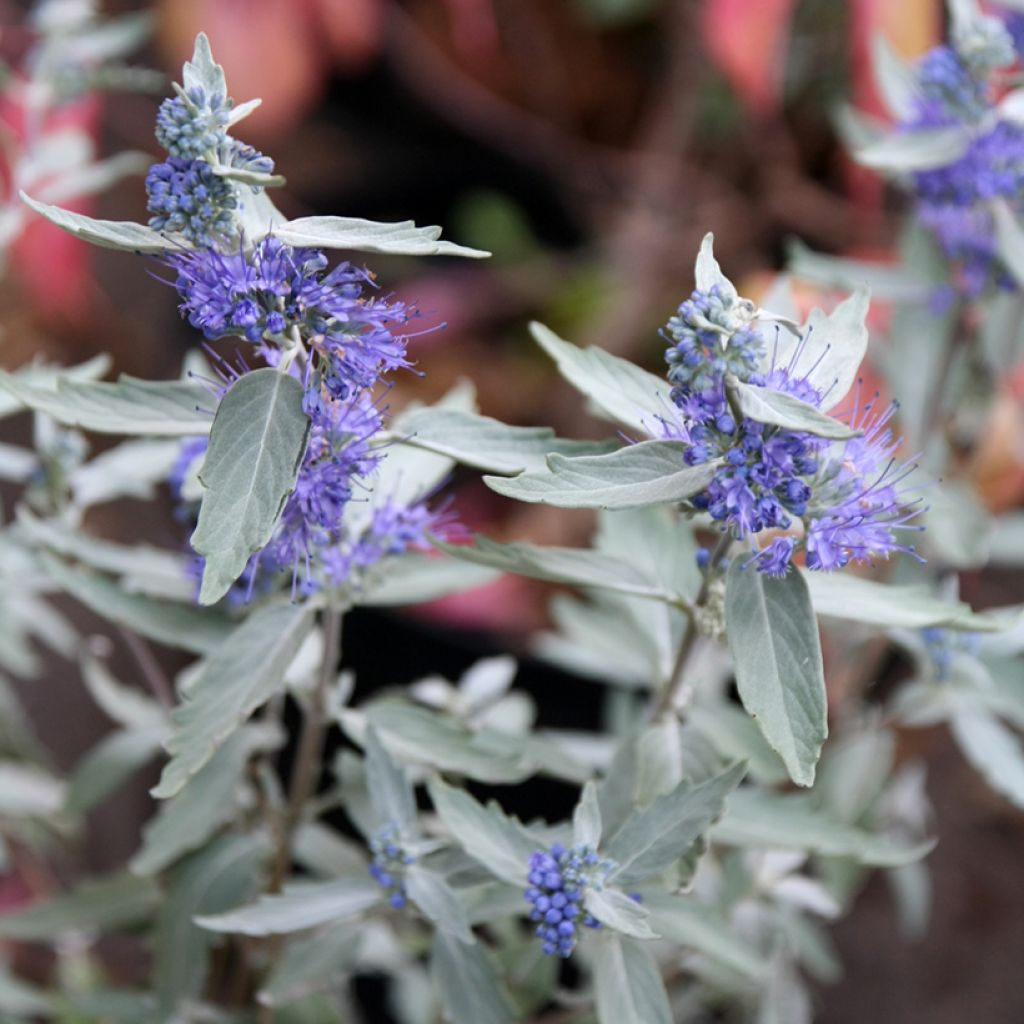

Caryopteris clandonensis Sterling silver - Bluebeard
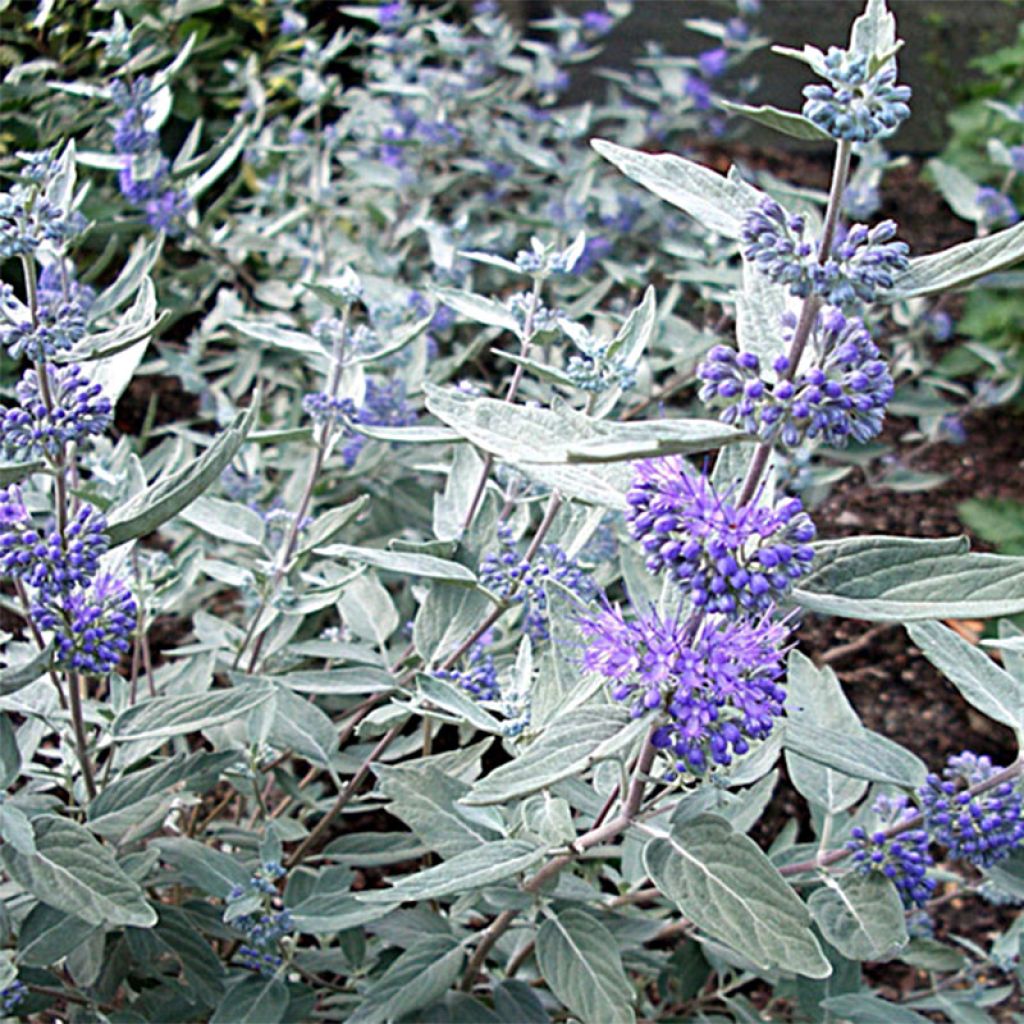

Caryopteris clandonensis Sterling silver - Bluebeard
Caryopteris clandonensis Sterling silver - Bluebeard
Caryopteris x clandonensis Sterling silver®
Bluebeard, Blue Spirea, Blue Mist Shrub
This item cannot be shipped to the selected country
Delivery charge from €5.90
Delivery charge from €5.90
More information
Schedule delivery date,
and select date in basket
This plant carries a 24 months recovery warranty
More information
We guarantee the quality of our plants for a full growing cycle, and will replace at our expense any plant that fails to recover under normal climatic and planting conditions.
From €5.90 for pickup delivery and €6.90 for home delivery
Express home delivery from €8.90.
From €5.90 for pickup delivery and €6.90 for home delivery
Express home delivery from €8.90.

Does this plant fit my garden?
Set up your Plantfit profile →
Description
Caryopteris x clandonensis Sterling Silver is a small hybrid shrub or subshrub of great class. This recent horticultural creation, awarded in 2008, is distinguished by particularly bright, silver-grey foliage, which forms a beautiful setting for its late flowering in vaporous bouquets of intense blue-mauve. It forms a rounded and ramified bush, covered with deciduous foliage exhaling the scent of turpentine when crushed. It is a plant for sunny and well-drained, even dry, soil, and proves to be quite hardy under these conditions. It can be planted in a sunny flower bed, a large rock garden, or even in a small hedge.
Caryopteris x clandonensis Sterling Silver is one of the hybrids obtained by cross-breeding Caryopteris incana, an Asian shrub called 'Bluebeard', and Caryopteris mongolica, more hardy, native to the colder regions of Mongolia and northern China. They all belong to the Verbenaceae family.
The Sterling Silver variety forms a dense bush measuring 1 to 1.20 metres (3 feet 4 inches to 3 feet 11 inches) in height and 90cm (35.4in) wide. It blooms in August-September, producing on the tips of its branches fluffy, wide and dense inflorescences composed of countless small flowers of intense blue, with prominent stamens. This flowering is particularly melliferous and nectariferous, and the shrub is often visited by many colourful butterflies. The deciduous foliage consists of small, thin, ovate leaves with irregularly dentate edges, arranged opposite each other on straight stems. They display a superb grey-blue colour with silver reflections, rarely observed in Caryopteris. The underside of the leaves is fuzzy and almost white. When crushed, they release a powerful aroma with resinous notes.
The Sterling Silver Caryopteris is used as a low hedge, in the company of summer-flowering shrubs that are as frugal as it is: yellow or orange shrubby Potentillas, chamomiles, dwarf blue conifers, Ceratostigma plumbaginoides, lavenders, dwarf buddleias, shrubby salvias... A colourful scene can be created in late summer by combining Caryopteris with sunflowers, evening primroses, Epilobium canum, Aster turbinellus or other more active asters. A group of 3 shrubs surrounding a brightly coloured repeat-flowering rose is a splendour in September, as their very different style and colour of flowering are perfectly complementary.
Report an error about the product description
Caryopteris clandonensis Sterling silver - Bluebeard in pictures
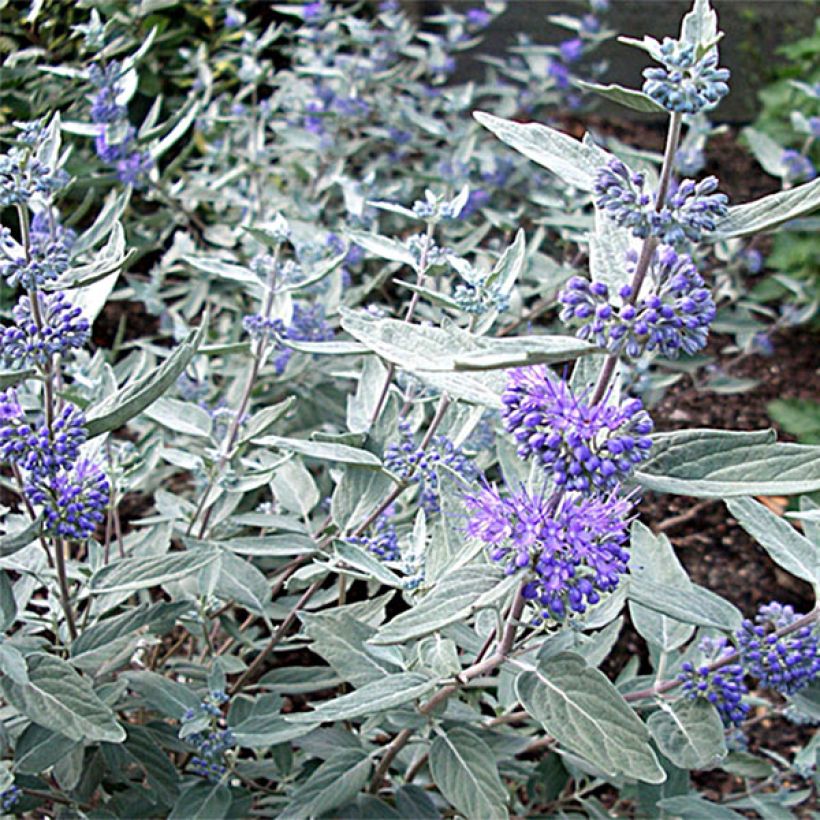

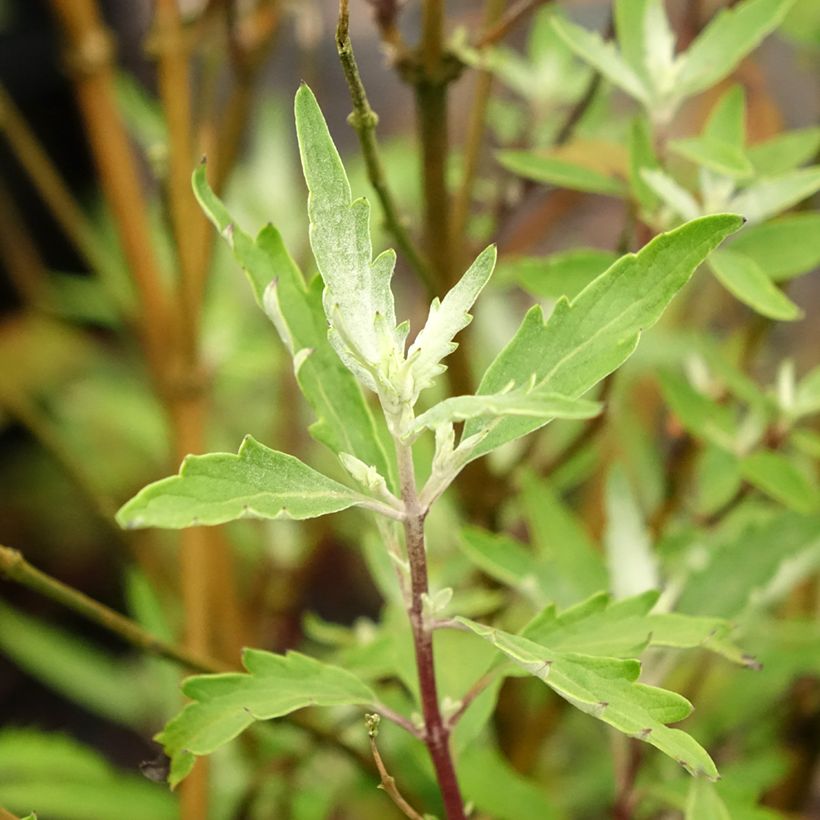

Plant habit
Flowering
Foliage
Botanical data
Caryopteris
x clandonensis
Sterling silver®
Verbenaceae
Bluebeard, Blue Spirea, Blue Mist Shrub
Cultivar or hybrid
Other Caryopteris
Planting and care
Planting period
Intended location
Care
-
, onOrder confirmed
Reply from on Promesse de fleurs
Striking foliage shrubs
Haven't found what you were looking for?
Hardiness is the lowest winter temperature a plant can endure without suffering serious damage or even dying. However, hardiness is affected by location (a sheltered area, such as a patio), protection (winter cover) and soil type (hardiness is improved by well-drained soil).

Photo Sharing Terms & Conditions
In order to encourage gardeners to interact and share their experiences, Promesse de fleurs offers various media enabling content to be uploaded onto its Site - in particular via the ‘Photo sharing’ module.
The User agrees to refrain from:
- Posting any content that is illegal, prejudicial, insulting, racist, inciteful to hatred, revisionist, contrary to public decency, that infringes on privacy or on the privacy rights of third parties, in particular the publicity rights of persons and goods, intellectual property rights, or the right to privacy.
- Submitting content on behalf of a third party;
- Impersonate the identity of a third party and/or publish any personal information about a third party;
In general, the User undertakes to refrain from any unethical behaviour.
All Content (in particular text, comments, files, images, photos, videos, creative works, etc.), which may be subject to property or intellectual property rights, image or other private rights, shall remain the property of the User, subject to the limited rights granted by the terms of the licence granted by Promesse de fleurs as stated below. Users are at liberty to publish or not to publish such Content on the Site, notably via the ‘Photo Sharing’ facility, and accept that this Content shall be made public and freely accessible, notably on the Internet.
Users further acknowledge, undertake to have ,and guarantee that they hold all necessary rights and permissions to publish such material on the Site, in particular with regard to the legislation in force pertaining to any privacy, property, intellectual property, image, or contractual rights, or rights of any other nature. By publishing such Content on the Site, Users acknowledge accepting full liability as publishers of the Content within the meaning of the law, and grant Promesse de fleurs, free of charge, an inclusive, worldwide licence for the said Content for the entire duration of its publication, including all reproduction, representation, up/downloading, displaying, performing, transmission, and storage rights.
Users also grant permission for their name to be linked to the Content and accept that this link may not always be made available.
By engaging in posting material, Users consent to their Content becoming automatically accessible on the Internet, in particular on other sites and/or blogs and/or web pages of the Promesse de fleurs site, including in particular social pages and the Promesse de fleurs catalogue.
Users may secure the removal of entrusted content free of charge by issuing a simple request via our contact form.
The flowering period indicated on our website applies to countries and regions located in USDA zone 8 (France, the United Kingdom, Ireland, the Netherlands, etc.)
It will vary according to where you live:
- In zones 9 to 10 (Italy, Spain, Greece, etc.), flowering will occur about 2 to 4 weeks earlier.
- In zones 6 to 7 (Germany, Poland, Slovenia, and lower mountainous regions), flowering will be delayed by 2 to 3 weeks.
- In zone 5 (Central Europe, Scandinavia), blooming will be delayed by 3 to 5 weeks.
In temperate climates, pruning of spring-flowering shrubs (forsythia, spireas, etc.) should be done just after flowering.
Pruning of summer-flowering shrubs (Indian Lilac, Perovskia, etc.) can be done in winter or spring.
In cold regions as well as with frost-sensitive plants, avoid pruning too early when severe frosts may still occur.
The planting period indicated on our website applies to countries and regions located in USDA zone 8 (France, United Kingdom, Ireland, Netherlands).
It will vary according to where you live:
- In Mediterranean zones (Marseille, Madrid, Milan, etc.), autumn and winter are the best planting periods.
- In continental zones (Strasbourg, Munich, Vienna, etc.), delay planting by 2 to 3 weeks in spring and bring it forward by 2 to 4 weeks in autumn.
- In mountainous regions (the Alps, Pyrenees, Carpathians, etc.), it is best to plant in late spring (May-June) or late summer (August-September).
The harvesting period indicated on our website applies to countries and regions in USDA zone 8 (France, England, Ireland, the Netherlands).
In colder areas (Scandinavia, Poland, Austria...) fruit and vegetable harvests are likely to be delayed by 3-4 weeks.
In warmer areas (Italy, Spain, Greece, etc.), harvesting will probably take place earlier, depending on weather conditions.
The sowing periods indicated on our website apply to countries and regions within USDA Zone 8 (France, UK, Ireland, Netherlands).
In colder areas (Scandinavia, Poland, Austria...), delay any outdoor sowing by 3-4 weeks, or sow under glass.
In warmer climes (Italy, Spain, Greece, etc.), bring outdoor sowing forward by a few weeks.

































